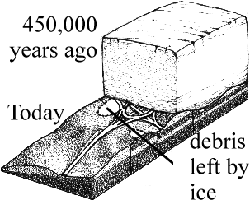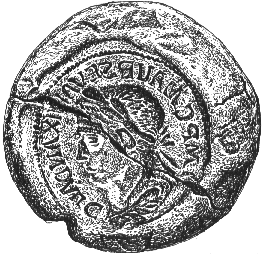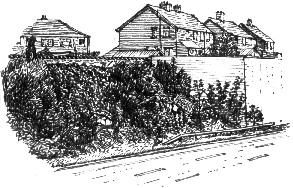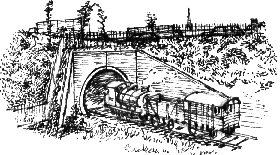
The Frozen NorthSunday 12th March 2000 IT'S ONE OF THOSE sunny Sundays when every minute of the day gets accounted for and, instead of a leisurely walk, we make two return journeys along the M1 motorway from Wakefield to Leeds. But even the motorway isn't without its interest. Here are a few things you might not know about the route of the M1 into Leeds;
IT'S ONE OF THOSE sunny Sundays when every minute of the day gets accounted for and, instead of a leisurely walk, we make two return journeys along the M1 motorway from Wakefield to Leeds. But even the motorway isn't without its interest. Here are a few things you might not know about the route of the M1 into Leeds;Ice sheets a thousand metres thick have moved across Yorkshire on several occasions. During the Anglian Glaciation, 450,000 years ago, the ice got as far as north London and Yorkshire was completely covered. When the ice melted it left a blanket of debris. Most of this has been eroded away, some by another advance of the glaciers (the Devensian, 18,000 years ago). But higher ground is sometimes capped by boulder clay or gravels from the earlier glaciation. Junction 42, the M62/M1 interchange is partly built on a patch of stony clay which may date from the Anglian.
Coin moulds and crucibles Roman coins, coin moulds and crucibles have been found at Lingwell Gate, just south of the M62/M1 junction, since 1697. The brass coins resemble dinarii and were struck between AD 138 and 278. There was probably an official mint here, coining money for the legions. But I like the alternative explanation, that a counterfeiting gang was operating in the area.
The world's first railwayThe cutting at Woodhouse Hill, on the M621/M1 link into Leeds, is through an outcrop of sandstone which was laid down in coal measures times, some 300 million years ago.This cutting was originally made for the Beeston and Hunslet Railway in 1899. The line closed in 1967 and the motorway follows the same route for half a mile.
George Walker wrote in 1814; 'the steam engine lately invented by Mr Blenkinsop, agent at the colliery . . . conveys above twenty waggons loaded with coals from the pits to Leeds. By two of these machines constantly employed the labour of at least fourteen horses is saved.' (the Leeds engineer Matthew Murray is now generally credited with the invention. The Middleton Railway is open to the public (I believe on most weekends and bank holidays, but please check with Tourist Information).
|

 The motorway passes over the last surviving branch of another line, the Middleton Railway, which was set up by an Act of Parliament in 1758. At that time horses were used to pull the waggons. During the Napoleonic Wars horse-fodder became more expensive than coal and in 1812 Middleton became the first railway to use steam locomotives.
The motorway passes over the last surviving branch of another line, the Middleton Railway, which was set up by an Act of Parliament in 1758. At that time horses were used to pull the waggons. During the Napoleonic Wars horse-fodder became more expensive than coal and in 1812 Middleton became the first railway to use steam locomotives.